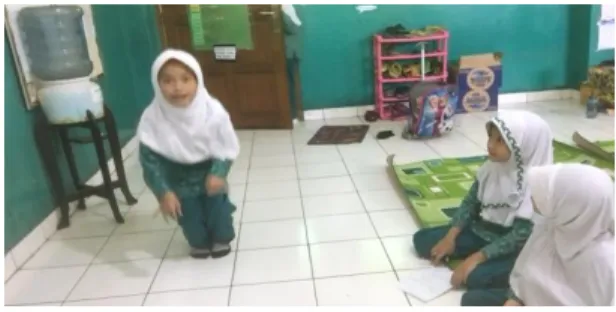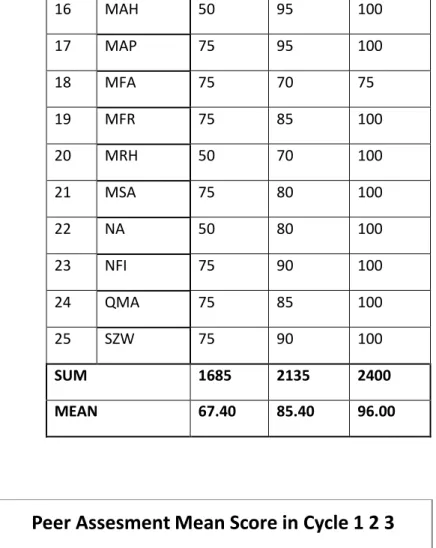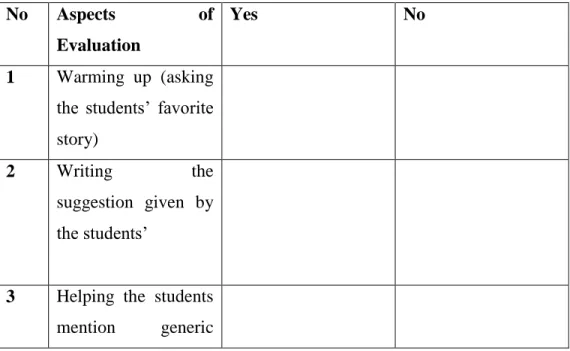Maka model pengembangan karakter dan profesi serta budaya melalui strategi pembelajaran bahasa Inggris sebagai bahasa asing yang sesuai dengan hasil belajar setiap fakultas perlu diteliti dan dikembangkan. Terkait dengan keyakinan guru dan mekanisme strategi pembelajaran bahasa Inggris di kelas, Wijirahayu (2017) menyarankan perguruan tinggi dan lembaga terkait untuk menetapkan kebijakan mengenai pengembangan kurikulum, khususnya mengenai pembelajaran kreatif dan inovatif terkait pelatihan strategi pembelajaran bahasa Inggris sebagai bahasa asing. ( Wijirahayu: 2017 ).
Content Language Integrate Learning
Berkaitan dengan role play, Fleming menyatakan dalam Zyoud (2006) bahwa role play atau drama pasti berpusat pada peserta didik karena hanya dapat dipraktikkan melalui kolaborasi aktif. Penggunaan teknik dan kegiatan drama di dalam kelas memberikan kesempatan yang menarik untuk menggunakan bahasa Inggris sebagai bahasa asing, sehingga siswa menjadi lebih nyaman menggunakan bahasa Inggris.
Model Pembelajaran dan Language Learning Strategies
Strategi kompensasi memungkinkan siswa untuk sepenuhnya menggunakan bahasa baru dari pengetahuan terbatas bahasa yang ada. Strategi kompensasi memungkinkan siswa untuk menghasilkan ekspresi lisan dan tulisan dalam bahasa yang sedang dipelajari, bahkan jika mereka tidak memiliki pengetahuan penuh tentang bahasa tersebut.
Draf Model Pengembangan
Mulitiliterasi TEFL
Religius Value Research
Action Research
CLIL ) Draf Buku teks
Bahan belajar online berbasis
Inggris
Publikasi artikel di Seminar dan Jurnal
Internasional
PENDIDIKAN
2007 Doctor, English Applied Linguistics, Universitas Katolik Atma Jaya, Jakarta 1994 Master in TESOL - Indiana University of Pennsylvania, USA.
PENGALAMAN KERJA
2014 Learning English as a Foreign Language: The Perspective of Teachers, The 61st TEFLIN International Conference, October 7 – 9 Tue Solo. 2015 The Development of English Imperatives, The 35th Annual Thailand TESOL International Conference, January Bangkok - Thailand.
SEMINARS/KONFERENSI/KONVENSI YANG DIHADIRI
- DEVELOPING TPR VOCABULARY PEER ASSESSMENT IN PRIMARYY SCHOOL CLASSROOM PRACTICESS
- IMPROVING STUDENTS‟ VOCABULARY MASTERY BY USING FLASHCARDS AT THE FIFTH GRADE STUDENT OF NURUL HASANAH ISLAMIC SCHOOL
- THE IMPLEMENTATION OF USING JIGSAW TECHNIQUE IN TEACHING READING COMPREHENSION
- THE USE OF PRESENTATION PRACTICE AND PRODUCTION (PPP) METHOD TO IMPROVE STUDENTS‟ SPEAKING ABILITY OF
- THE EFFECTIVENESS OF USING RECIPROCAL TEACHING TO IMPROVE READING COMPREHENSION SKILL AT THE TENTH GRADE STUDENTS OF
- THE EFFECTIVENESS OF COMMUNICATIVE LANGUAGE TEACHING (CLT) TO IMPROVE THE SPEAKING SKILLS OF THE FIRST GRADE STUDENTS OF
A study on the development of beliefs about language learning and language learning strategies of English. 2014 Using film and role play to enhance beliefs and language learning strategies in EFL context.
Developing TPR Vocabulary Peer Assessment in Primary School Classroom Practices
Suciana Wijirahayu
Ria Septiani
In this research, the practice of peer assessment was by doing TPR activity and completing the rubric sheet. This can be seen from the results of the students' Peer Assessment scores in each cycle. The above data were the students' scores in performing TPR based on the peer assessment's rubric sheet in each cycle.

Peer Assesment Mean Score in Cycle 1 2 3
- Introduction
- The Research Questions
- Literature Review
- Vocabulary Definition
- Types of Vocabulary
- Flashcards Definition
- The Role of Flashcards in Teaching Vocabulary
- The Procedure of Using Flashcards
- Methodology
- Technique of Collecting Data
- Findings and Discussions
- Conclusion
- Suggestion
English vocabulary mastery, the researcher applied the third cycle with the theme "The world of work" and TPR activity as Matching Command with Picture Form. The improvement of students' vocabulary mastery in this study was developed in each cycle through a few themes: "How are you?", "The wonderful animal" and "The world of work". The author therefore names the research as "The effectiveness of using puzzle technique in teaching reading comprehension to the tenth grade students of SMK PGRI 36 Jakarta during the second semester of 2016/2017 Academic year."
The Significance of the Research
According to the identification of the problem, the writer limits the research to find the effectiveness of using the jigsaw technique in teaching reading comprehension to the tenth grade students of MA MinhajutTholibin Jakarta in the academic year 2016/2017. Inform the students to pay attention to the idea of the reading material given. According to the achieved result of the collected and analyzed observation, from the author's result, the author can conclude that the Jigsaw strategy can improve the student's reading comprehension.
The use of Multimedia-Based Presentation in Improving Students’
Speaking Skill
Information level students are considered to be able to access and gather information related to different knowledge through language proficiency. In addition, after referring to the process of teaching English to nurses in the 2nd semester, the researcher found that all classes still used teacher-centered approach to teaching and learning English. In order to solve the problems and give the students a chance to work independently and practice their English speaking skills, the researcher did a small research on creating an action research by using multimedia based presentation to improve the students'.
The scope & significance of the study
The Purpose of Study
LITERATURE REVIEW
The Background of the Research
This phenomenon is also encountered in the tenth grade students of MAN 2 East Jakarta, they lack reading comprehension skills. If they are, we should not be surprised if students' reading comprehension skills are low. Based on the above background, the researcher is motivated to conduct a research entitled "Implementing the use of reciprocal teaching to improve reading comprehension skills in the tenth grade students of MAN 2 East Jakarta in the academic year 2016-2017" .
The Question of the Research
- The Concept of Reciprocal Teaching
- The Four Strategies of Reciprocal Teaching
- Scaffolding and explicit instruction
- Social interaction
Brown and Palincsar, in Doolittle et al., define reciprocal teaching as an instructional strategy based on modeling and supervised practice in which the instructor first models a series of reading comprehension strategies and then gradually transfers responsibility for these strategies to the learners. It shows that reciprocal teaching is a method of improving students' reading skills where the teacher gives an example of what to do in a group at the beginning and then instructs the students to imitate the process in their own group. According to Brown and Palincsar, Doolittle et al (2006) argue that reciprocal teaching is an instructional strategy based on modeling and guided practice in which the instructor first models a series of reading comprehension strategies and then gradually transfers responsibility for these strategies to the students. .
Reading
- The Concept of Reading
- The Kinds of Reading
- The Meaning of Reading Comprehension
- Descriptive Text
- Generic Structure of Descriptive Text
- Reciprocal Teaching and Reading Comprehension
- Reciprocal Teaching Applied in Teaching Reading Comprehension
Second, other benefits can be gained from interaction during the mutual teaching process. Reciprocal teaching builds in readers a metacognitive awareness of the active nature of reading, task demands, and self-regulation in order to succeed in reading comprehension. Oczkus affirms that reciprocal teaching is based on the collaborative nature of learning that deepens one's reading comprehension through social interactions.
The Setting of the Research
Mutual teaching is an instructional method for cooperative learning in which natural dialogue models and exposes students' thought processes about a shared learning experience. Teachers promote mutual learning through their belief that joint construction of meaning between themselves and students leads to higher quality learning (Allen, 2003 as cited in Richards). Finally, all the above principles are in line with the core of mutual education, which is composed of four strategies, namely, predict, clarify, question and summarize to promote students' understanding.
The Method of the Research
The subject of this research is the tenth grade students of MAN 2 Jakarta, which consists of 37 students. According to Gay, action research in the classroom deals with a local problem and is carried out in a local environment. Furthermore, he states that "the purpose of action research is to solve a problem in the classroom using the scientific method." This means that the researcher must also provide a solution and make an effort for the problem that occurs in the teaching and learning process.
The Population and Sample of the Research
The Instrument of the Research
The CAR Procedures
To identify the problem, the researcher observes the learning process of teaching, interviews the teacher and takes a pre-test. In this step, the researcher develops a lesson plan, creates instruments, observation guidelines and post-test 1. This is the step where the researcher implements the technique in the classroom based on the developed plan, teaching.
The Technique of Data Collecting
The researcher is helped by the teacher to observe the critically informed action in the context in which it takes place. If the researcher finds some difficulties unsolved during the teaching-learning process, the researcher prepares the re-planning steps. In this case, if the result has not reached the criteria, the researcher must therefore prepare and arrange the next cycle.
The Criteria of the Action Success
The teacher observes how the teaching process flows, monitors and writes the answers of the students in the class. They are before implementing the action, implementing the CAR, discussing the data after implementing the action, and interpreting the result.
Before implementing the CAR
The implementation of the CAR 1) Cycle I
When reviewing the results of the post-test, the teacher must change and improve the lessons that were carried out in cycle II. The teacher was also able to devote himself more to the students and join each group for a while. Looking at the post-test, the teacher and the observer were satisfied with the results as there were some improvements in the post-test compared to the pre-test.
The discussion of the data after CAR 1) The result of the test
POST-TEST
Background of the Research
Speaking is "the process of constructing and sharing meaning through the use of verbal and non-verbal symbols, in a variety of contexts" (Chaney, 1998, p. 13). Speaking is an interactive process of meaning construction that involves the production, retrieval, and processing of information (Brown, 1994; Burns & Joyce, 1997). Liao (2009) states that speaking skills are what will be measured most in real life situation.
The Identification of the Problems
Communicative language teaching can be understood as a set of principles about the goals of language teaching, how students learn language, the types of classroom activities that best facilitate learning, and the roles of teachers and students in the classroom (Richard, 2006: 2). ). Almost most of the students had less motivation to speak English because they thought English was difficult. Almost most of the students were passive because they were shown to be teacher-centered in the teaching and learning process.
Research Questions
Objective of the research
The Significance of the Research
- Definition of Teaching
- Teaching Strategies
- Methods of Teaching
- Teaching Speaking
- Definition of Learning
- Learning Activities
- Learning Strategies
- Learning Style
Like Sudjana, he states that teaching is a process of giving, guiding/assisting the students in the learning process. As the teacher explained, listening is the activity that the auditory use students undertook. Learning strategies are defined as "specific actions, behaviors, steps, or techniques - such as seeking out conversation partners, or encouraging yourself to tackle a difficult language task - used by students to improve their own inclination". Scarcella & Oxford, 1992, p. 63). The word strategy comes from the Ancient Greek word strategia, meaning steps or actions taken to win a war.
Theoretical Framework
When planning a language course, decisions must be made about the content of the course, including decisions about which vocabulary and grammar to teach at the beginning, intermediate and advanced levels, and which skills and micro-skills to teach and in what order . Decisions about how best to teach syllabus content belong to the field of methodology. Language teaching has seen many changes in ideas about syllabus design and methodology over the past 50 years, and CLT has prompted a rethinking of approaches to syllabus design and methodology.
Theoretical Hypothesis
The Goal of Language Teaching
They were based on the belief that grammar could be learned to guide instruction and through a methodology that made heavy use of repetitive practice and drilling. Knowing how to vary our language use depending on the setting and participants (for example, knowing when to use formal and informal speech or when to use language appropriately for written rather than spoken communication). To know how to maintain communication despite limitations in your language skills (e.g. by using different types of communication strategies).
Techniques of Collecting Data Technique of Collecting Data
Quasi-experiment is a type of experimental design where the researcher has limited influence and control over the selection of study participants. Particularly in quasi-experiments, the researcher does not have the option to randomly assign the participants and/or ensure that the selected sample is as homogeneous as desired (Leedy and Ormord, 2010).
Procedure of the Research
Based on the data analysis, it is concluded that communicative group technique can improve both the students' speaking skills and the teaching-learning situation in the classroom. Based on the facts of how effective communicative language teaching is to improve students' speaking skills, the researcher gives some suggestions to the teachers, the students, other researchers and for school as the following. The use of communicative language teaching method to improve students' speaking skills (the experimental study of the second year students of SMP N 1 Jambu in the academic year 2013/2014).

